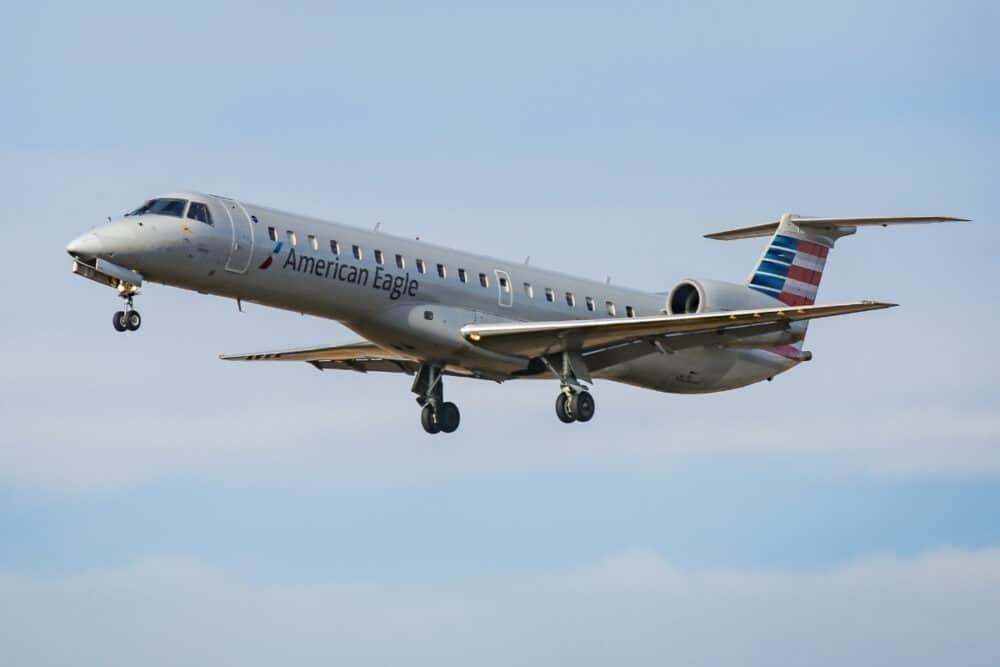American Airlines made big news recently when it announced a partnership with JetBlue. This came just a few months after the carrier announced a deeper partnership with Alaska Airlines that would see the latter join the oneworld alliance. Here’s why American believes that partnership will work successfully.

The coasts were not American’s strengths
In today’s second quarter earnings call, Vasu Raja, Chief Revenue Officer at American Airlines, indicated that about 22-23% of American’s capacity was along the West Coast and in the Northeast (New York, Boston area). Dallas and Charlotte combined were at just under 50% of the airline’s total capacity.
The airline’s performance in these markets was not very strong as the carrier saw passenger revenue per available seat mile (PRASM) was below the industry average. So, the airline was in a bind. In Vasu’s word, American was “too small to win and too big to go and exit.” Plus, the massive customer base on both coasts meant there were plenty of revenue opportunities.
American’s competitors were also gaining ground. United operates massive hubs out of San Francisco and Newark Liberty International Airport. Meanwhile, Delta Air Lines is building up its Seattle hub while staying aggressive in New York and Boston.

Turning to Alaska and JetBlue
Both Alaska Airlines and JetBlue focus heavily on narrowbody short- and medium-haul operations in the domestic US and into Latin America. Both carriers lack their own international long-haul services (although JetBlue is forging ahead with its plans), and their partnerships were not very deep to provide strong, tangible benefits. Then, American came into the picture.

American does not have a full-fledged hub on the West Coast– though it did have sizable operations out of Los Angeles. And, on the East Coast, much of the carrier’s operations were out of Philadelphia.
In New York City, American Airlines historically maintained a 10% originating share, according to Vasu Raja. In some of the most expensive airports in the world (New York-JFK, for instance), American Airlines was flying 50-seat regional jets to reach markets.

The plan moving forward
American Airlines is going to leverage the strength of both of those airlines when it comes to market share and customer loyalty by filling in the international long-haul gaps for JetBlue and Alaska. Already, that is being shown through the carrier’s announcement of New York to Tel Aviv and Athens routes. Out of Seattle, American is planning Bangalore, London, and Shanghai flights.
In Vasu Raja’s words:
“Very importantly, it keeps these very vibrant and independent competitors vibrant and independent competitors.”

The carrier envisions plenty of long-term economic benefits from the partnership. First, it could go out and remove some of the 50-seat regional jet operations. American also plans on moving around some slots in the New York-area with JetBlue that could see the latter picking up American’s 50-seater routes using better airplanes like E190s, A320s, or in the future, A220s– a huge boon for travelers– and then offer connections on to American’s 777s and 787s across the pond.

What about Philadelphia?
Philadelphia is a massive hub for American Airlines and the carrier’s main transatlantic gateway. American will maintain both Philadelphia and New York. Philadelphia is a reliable hub that offers plenty of connections across the mainland United States– about 90%, according to Vasu Raja– off to Europe. Meanwhile, New York City would be a heavy origin and destination market along with some major connecting markets.
Do you think American is on the right track with its partnerships? Let us know in the comments!



